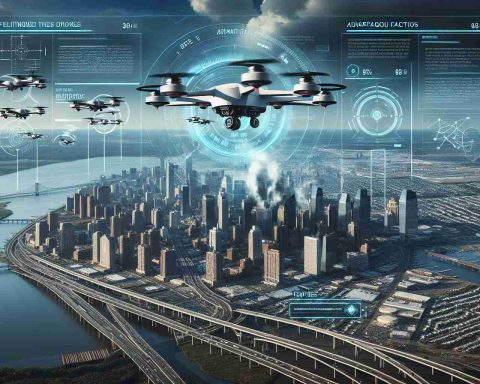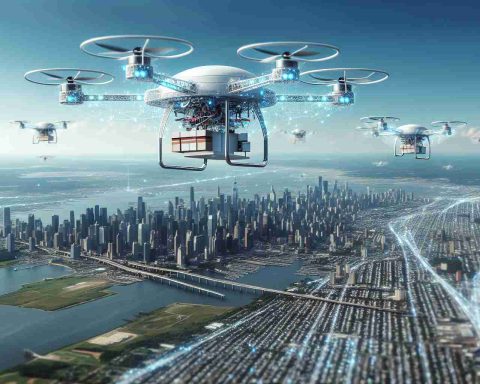Pixxel Launches Groundbreaking Hyperspectral Imaging System
In an extraordinary advancement for earth observation, Pixxel has launched its Firefly satellites, which embrace futuristic capabilities to monitor our planet like never before. These cutting-edge satellites utilize a remarkable resolution paired with the capacity to collect data across over 150 spectral bands. This allows them to identify minute shifts in chemical structures, assess vegetation health, evaluate water quality, and monitor atmospheric conditions with unparalleled precision.
With a swath width of 40 kilometers and the ability to revisit the same area daily, Fireflies ensure thorough surveillance of extensive regions without sacrificing detail. This unique blend of high resolution, extensive spectral data, and frequent coverage solidifies Firefly’s status as the premier commercial hyperspectral imaging solution globally.
Orbiting in a sun-synchronous position at approximately 550 kilometers, these satellites lay the groundwork for Pixxel’s mission to serve as a vigilant health monitor for the Earth. Key figures in the company emphasize that understanding the planet’s intricacies is vital for our future. The commercial launch of these satellites marks a pivotal step in harnessing space technology to confront environmental challenges.
The implications of Firefly’s capabilities are broad-ranging—from helping environmental agencies combat deforestation to enabling industries in resource management. With plans to fuse hyperspectral data with artificial intelligence, Pixxel aims to revolutionize decision-making processes, paving the way for enhanced environmental stewardship worldwide.
Expansive Implications of Pixxel’s Firefly Satellites
The launch of Pixxel’s Firefly satellites signifies a paradigm shift not only in satellite technology but also in how society approaches environmental stewardship. As climate change increasingly dominates global discourse, the capacity to monitor ecosystem health with unprecedented precision becomes critical for policymakers and conservationists alike. Leveraging this data, governments and organizations can develop more informed strategies to combat deforestation, water scarcity, and pollution.
In terms of cultural impact, the enhanced visibility into Earth’s health could foster a more engaged public. As citizens gain access to granular insights about their environments, there could be a rising demand for transparency and accountability from industries and governments. Increased awareness may spur grassroots movements advocating for sustainability, and communities might play a more significant role in environmental conservation efforts.
Economically, the implications are profound. The ability to monitor natural resources effectively can bolster industries such as agriculture, where crop management decisions become data-driven. As a result, resource efficiency could lead to significant economic benefits worldwide, particularly in developing regions where agricultural practices need modernization.
Looking to the future, the integration of AI with hyperspectral data may open doors to innovative applications—from precision agriculture to urban planning. As these technologies mature, we may witness a transformative paradigm shift in how we interact with our planet, ultimately shaping a more sustainable and economically viable future. The long-term significance of Pixxel’s contributions rests not only in their technological prowess but in their potential to redefine the relationship between humanity and the Earth.
Discover How Pixxel’s Firefly Satellites are Revolutionizing Earth Observation
Pixxel’s Innovative Hyperspectral Imaging System
Pixxel has taken a significant leap forward in earth observation technology with the launch of its Firefly satellites. By harnessing advanced hyperspectral imaging capabilities, these satellites can monitor various environmental factors more effectively than ever before. Their sophisticated design allows them to capture data across over 150 spectral bands, offering insights into chemical compositions and conditions that were previously difficult to detect.
Key Features of Firefly Satellites
The Firefly satellites boast impressive specifications that position them as leaders in the hyperspectral imaging market:
– High Resolution: Enables the detection of minute changes in environmental conditions.
– Swath Width of 40 Kilometers: Covers vast areas without compromising on detail.
– Daily Revisit Capability: Facilitates frequent monitoring of the same region, enhancing data relevance.
– Sun-Synchronous Orbit: Positioned at approximately 550 kilometers, allowing for consistent lighting conditions for better imaging.
These features allow Firefly satellites to assess vegetation health, evaluate water quality, monitor atmospheric conditions, and more, thus supporting diverse industries from agriculture to urban planning.
Use Cases for Hyperspectral Imaging
Pixxel’s Firefly technology can be utilized in various fields, including but not limited to:
– Environmental Monitoring: Assisting agencies in tracking deforestation and habitat degradation.
– Agriculture: Enabling farmers to optimize crop health and yields through precise monitoring.
– Urban Development: Providing city planners with insights into land use and environmental impacts.
– Water Management: Evaluating water bodies for quality and potential pollutants.
Advantages and Limitations
# Pros:
– Enhanced Data Quality: The broad spectral bands provide more detailed insights than traditional imaging systems.
– Rapid Response Capability: Daily revisit times allow for timely data collection, crucial in emergency situations such as natural disasters.
– Integration with AI: Plans to fuse data with artificial intelligence will facilitate smarter decision-making processes.
# Cons:
– Cost Considerations: The advanced technology may lead to higher operational costs for users.
– Data Complexity: Analyzing hyperspectral data requires specialized knowledge and tools, which may limit accessibility for smaller organizations.
Pricing and Market Trends
While specific pricing details for Firefly service packages are yet to be disclosed, the growing demand for hyperspectral imaging solutions suggests that Pixxel is well-positioned to capitalize on market trends. As industries place greater emphasis on sustainability and environmental stewardship, the need for accurate monitoring solutions is surging.
Security and Sustainability
In light of increasing environmental concerns, Pixxel emphasizes the sustainability aspect of its technology. By offering advanced monitoring tools, Firefly satellites can aid in addressing climate change, resource management, and pollution monitoring. Moreover, the company is committed to ensuring data security, safeguarding sensitive information related to environmental assessments.
Innovations and Future Predictions
As Pixxel continues to develop its technology, the potential for future applications remains substantial. Innovations in data processing and integration with AI may unlock new use cases, enhancing the effectiveness of environmental monitoring on a global scale. Analysts predict that we will see significant advancements in how industries utilize hyperspectral data, leading to more informed decision-making and a proactive approach to environmental issues.
For the latest updates on Pixxel and the advanced capabilities of its Firefly satellites, you can visit the official site at Pixxel.




















